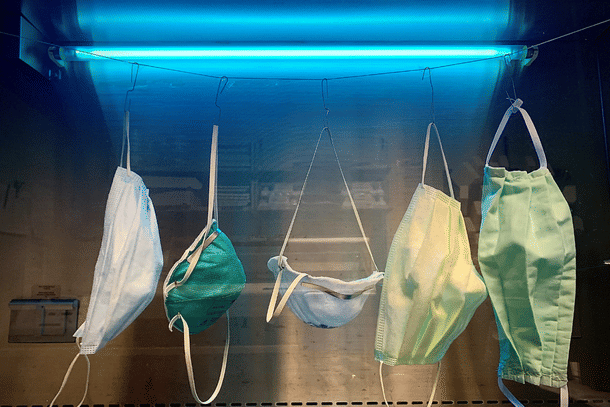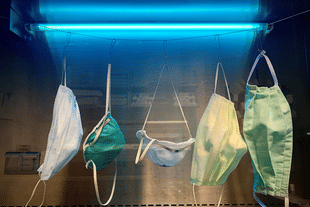News Brief
Disinfecting Public Spaces — A Safer Ultraviolet Light Effectively Kills Coronavirus In Study
Swarajya Staff
Sep 18, 2020, 05:21 PM | Updated 05:20 PM IST
Save & read from anywhere!
Bookmark stories for easy access on any device or the Swarajya app.


One of the ways in which the coronavirus spreads is surfaces. A person could touch a surface, like a tabletop, with the virus on it, then touch their face — in particular the nose or mouth — and get infected.
The risk of virus transmission in this way may be lesser than by contact with respiratory droplets in air, but the threat can get amplified in public settings where people move about freely and contact with surfaces is high. Think of hospitals, shopping malls, public transport.
In light of this risk, a new study offers hope for safe and effective disinfection of surfaces.
Research by Japan’s Hiroshima University has found that light of a particular kind — the ultraviolet C (UVC) with a wavelength of 222 nanometres (nm) — can effectively kill SARS-CoV-2, the virus behind the Covid-19 pandemic.
This is the first proof of the “far-UVC” light’s potency against SARS-CoV-2. Previously, it was tested against seasonal coronaviruses only, according to the university.
The details of the experiment are outlined in a paper published in the American Journal of Infection Control.
Researchers took a 100 microlitre solution containing the virus and spread it into a circle of 7 cm diameter on a sterile polystyrene plate. Then, they dried it in a biosafety cabinet at room temperature before subjecting it to UVC light from a krypton-chloride excimer lamp.
Researchers observed that exposure of the viral culture to 0.1 milliwatt per square centimetre of the light for 30 seconds all but took out the virus — a 99.7 per cent reduction.
This is impressive in itself, but the UVC light being used to kill the virus is also safer than the UV disinfection system most commonly used today; UVC light at 254 nm wavelength is harmful to the skin and eyes. This aspect has limited its use to unoccupied areas only.
The 222 nm UVC light, in comparison, has “a very limited penetration depth in the skin or eyes” while also being “an efficient anti-microbial technology.”
It can, therefore, be used in wider public settings even when people are around. But more research will be necessary to show the safety and efficacy directly in this context.
Additionally, the UVC light study would benefit from a companion study that tests the effect of the light on coronavirus in a real-world environment.
Ultraviolet light is part of the electromagnetic spectrum adjacent to the blue-violet band of visible light. It has a history of use for the goal of disinfection, going back to the early twentieth century.
The UV light is chopped up into A, B, and C bands, each representing a section of the wavelength in nanometres.
The ozone layer in the atmosphere filters out some of the UV light coming in from the Sun, in particular a small part of the UVB and all of the UVC radiation.
The Delhi Metro Rail Corporation is reportedly speaking to the Defence Research and Development Organisation about using UV disinfection technology to sanitise the train and station surfaces.




